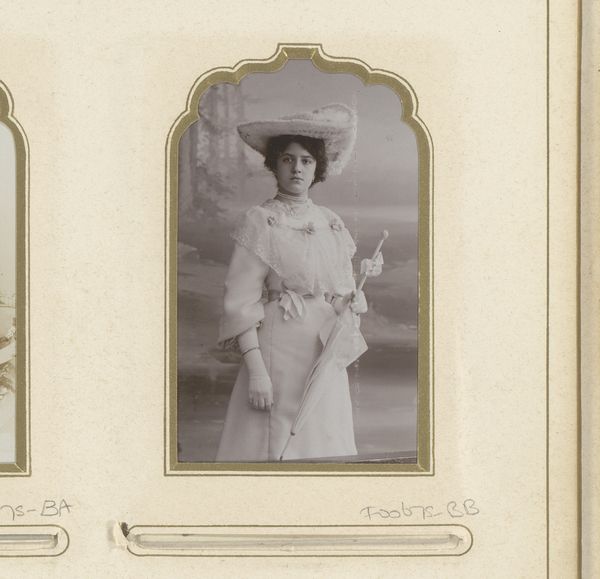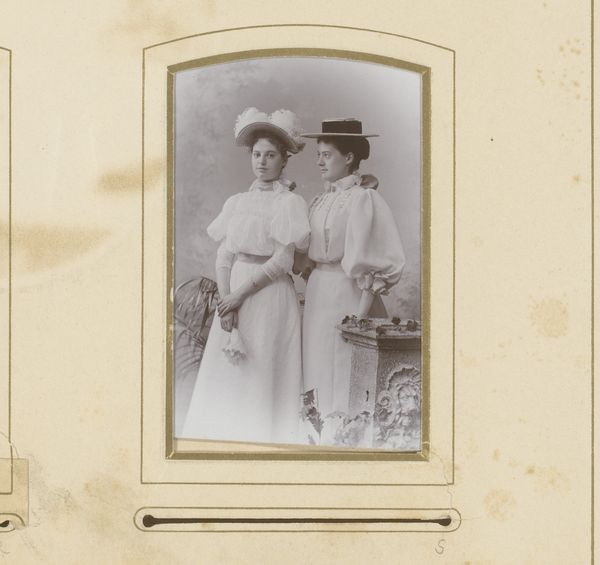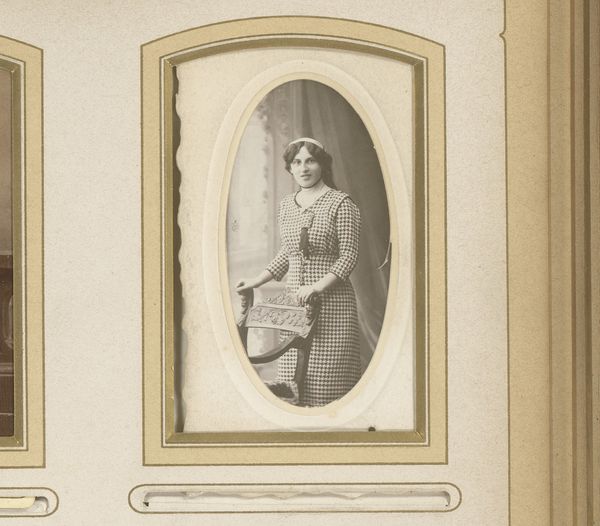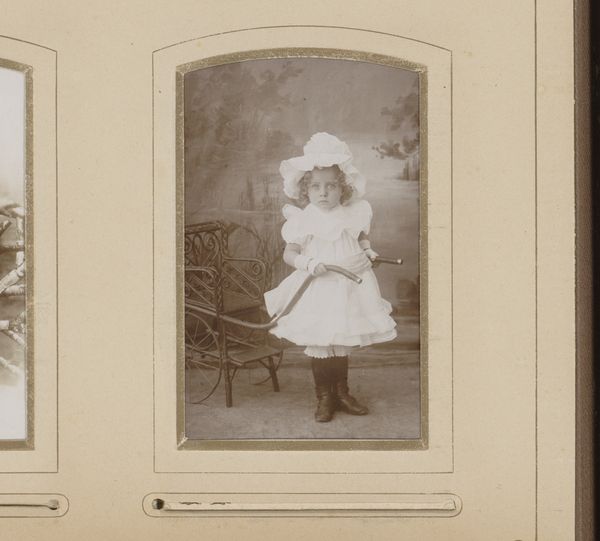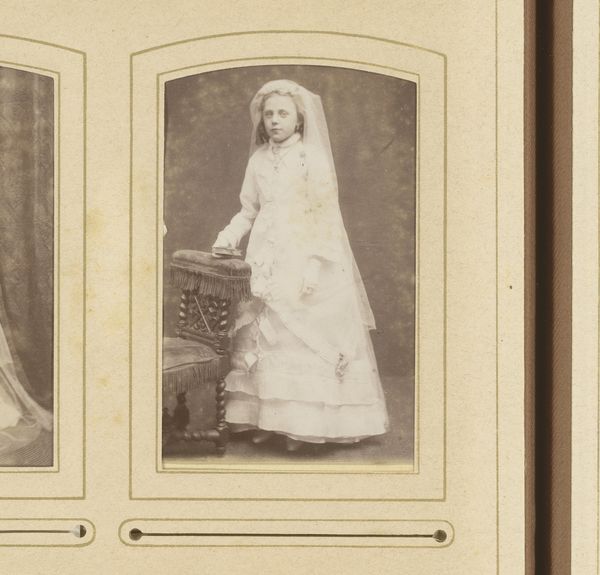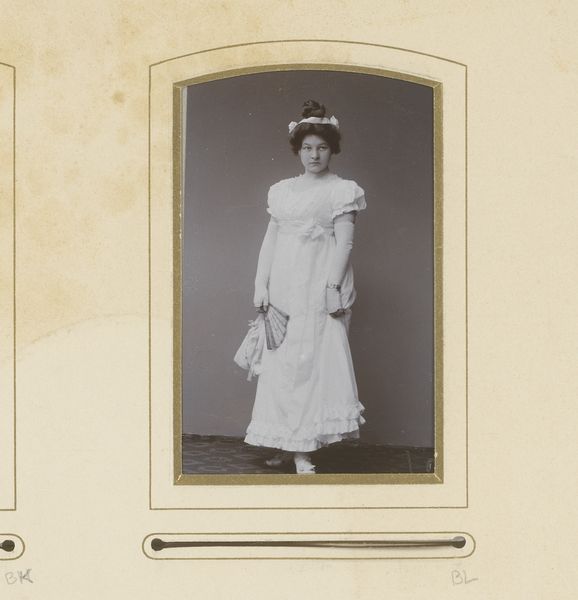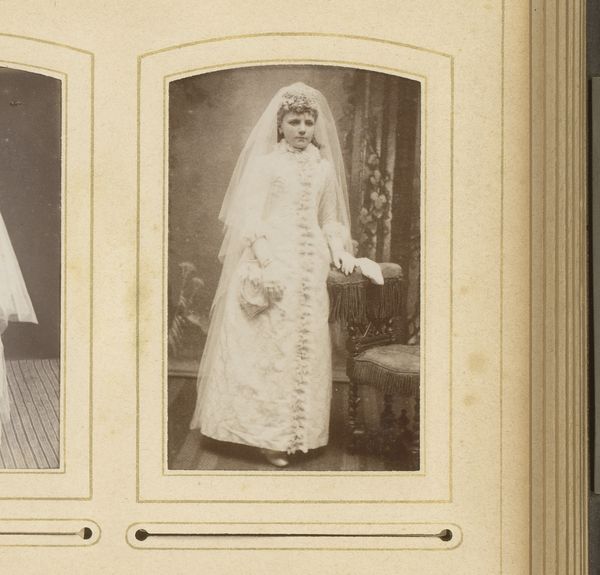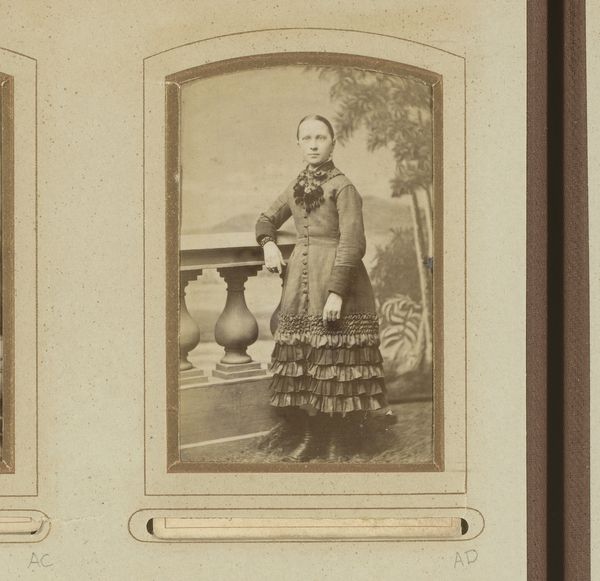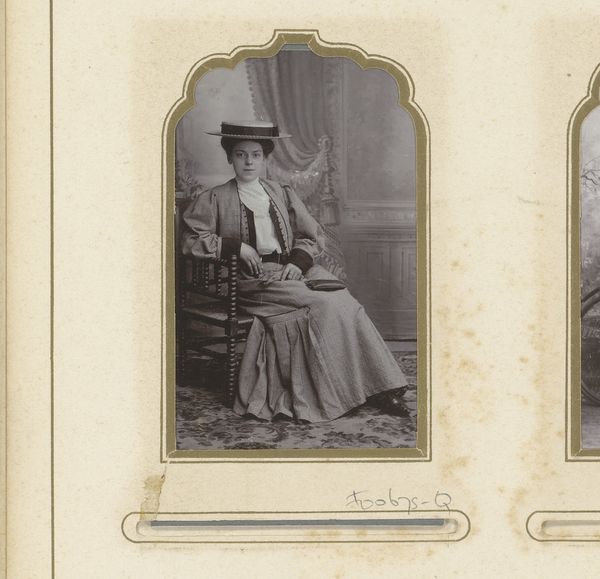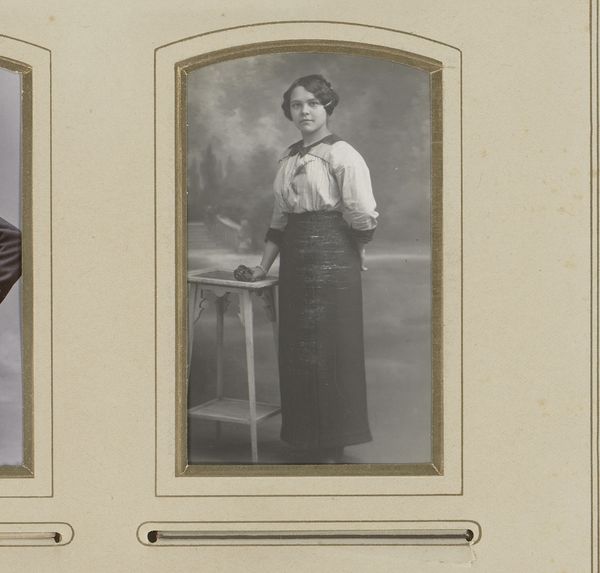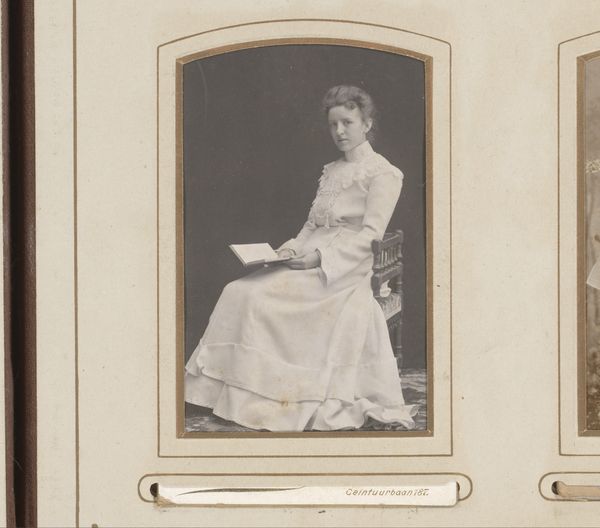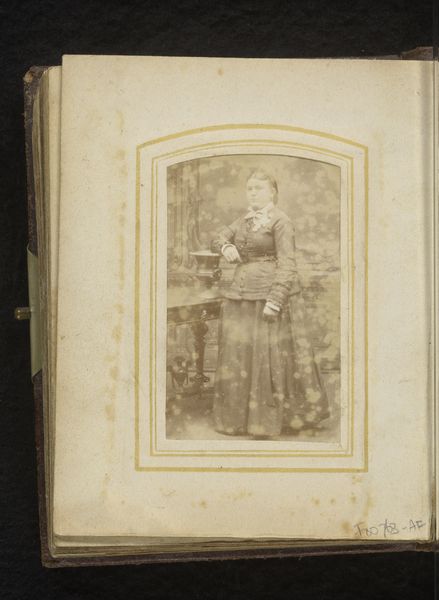
Dimensions: height 78 mm, width 46 mm
Copyright: Rijks Museum: Open Domain
Curator: This is a photograph entitled "Portret van een jonge vrouw in witte jurk met hoed en paraplu," or "Portrait of a Young Woman in White Dress with Hat and Parasol," attributed to Gerrit Leenheer and thought to be made sometime between 1880 and 1940. Editor: My initial thought is how perfectly this image captures a bygone era. The softness of the light, the gentle composition—there’s almost a dreamlike quality to it. Curator: Indeed. It seems imbued with a sense of gentility, reflective of the cultural ideals surrounding women during that period. Photography as a portrait medium rose significantly then, democratizing representation in a way that paintings previously hadn't. The framing here also tells its own story about presenting and consuming photographs in albums. Editor: The woman's attire immediately brings to mind the late Victorian or Edwardian periods. That all-white ensemble – dress, hat, parasol - feels significant. White often represents purity and innocence, values heavily associated with women in that era's iconography. But it also indicates a certain degree of wealth, doesn't it? Maintaining white clothing requires resources. Curator: Absolutely. Garments like these weren’t just personal expressions, but clear social signifiers. Photography made them more widely available, although their impact still largely remained within the realm of the sitter's community, and not necessarily "democratized" beyond its immediate audience. The parasol adds to the semiotic weight: shielding from the sun, further connoting leisure and an almost rarified existence. Editor: And that pose - slightly stiff, yet poised. Holding the small bouquet alongside the parasol contributes to a narrative of cultivated femininity. Flowers have long served as symbols— beauty, ephemerality, delicate feelings. It's a tightly woven web of symbolic elements reinforcing prevailing social codes. Curator: But photography also, gradually, came to question or disrupt established artistic forms. We've witnessed its evolving capacity to not only capture but to also critique norms. Editor: It’s true. Looking at this now, it invites a multi-layered reading of femininity – a curated presentation of innocence and gentility but also, perhaps, the subtlest hint of a rebellion against these expectations. The soft-focus treatment of this portrait also is likely suggestive of how female photographers sought to present their subjects. Curator: Indeed. By recognizing both what is overtly presented and the quiet subtleties within the photograph, we are given access to more nuanced, multi-layered discussions. Editor: Right, a tangible fragment of both the collective and individual experience.
Comments
No comments
Be the first to comment and join the conversation on the ultimate creative platform.
